A Mom Draws “Love is...” Inspired Comics About Parenthood, and We Can’t Help but Nod in Agreement

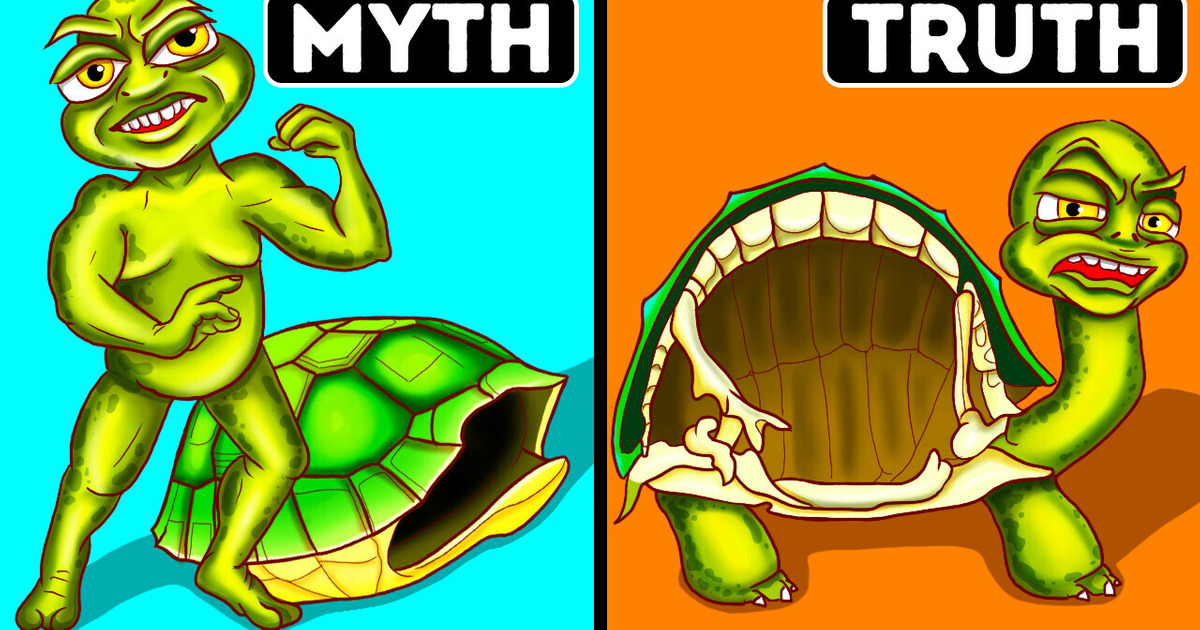
Check this out! Each zebra has its own unique pattern of stripes, just as people have their own unique fingerprints. Is it just a myth, or is it the truth? What do you think?

It’s true. Stripes on each zebra form a unique pattern, so it’s impossible to find 2 zebras that are exactly the same. The stylish black and white pattern serves as an optical illusion to confuse and scare away their key enemies: predators and annoying insects such as tsetse flies or horseflies. Zebras are probably aware of how fabulous they are because they take time to groom one another. So if you ever see 2 zebras standing close to one another, they aren’t biting each other — it’s a friendly beauty routine.
Unlike humans, zebras can’t scratch themselves on their own that easily. So, they’re just pulling loose hairs off each other. I do that. Although zebras live in herds, they usually create smaller family groups: a male, several females, and their offspring. And each member of that group is unique when it comes to their stripe patterns.
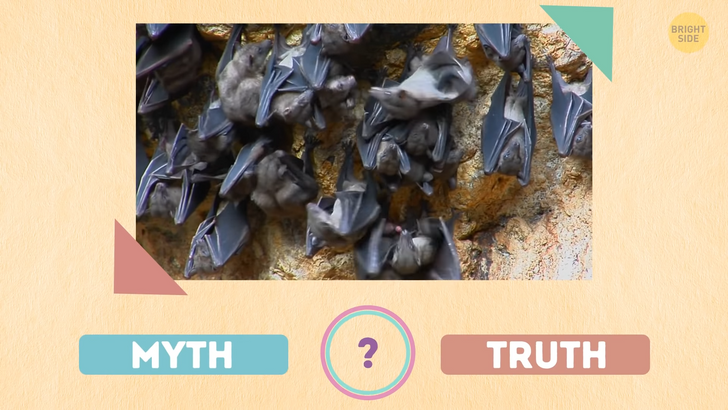
All bats are blind. Would you buy it?
Nah, it’s just a myth. Being “blind as a bat” is a figure of speech, and it comes from the assumption that bats cannot see properly. In ancient times, also known as before the 21st century, people used to think that bats were blind, judging these charismatic creatures by their weird flight patterns. Many bats do use echolocation to navigate, but still, all of them can see.

Here comes the next one: lobsters are monogamous and stay together for a lifetime. True or false, what do you say?
Sorry to spoil the romance, but it’s just a myth made popular by a famous TV show. In real life, lobsters aren’t monogamous at all. Dominant male lobsters mate with several females. And then, one by one, they vanish — only to reappear on a restaurant table with melted butter. Mmmm. No worries, the animal kingdom still has some hopeless romantics that remain faithful to their mates throughout their lives: swans, gray wolves, beavers, bald eagles, and gibbons, to name a few.

You can get warts from handling frogs or toads. What do you think about this rumor?
It’s an old myth probably related to the fact that both toads and frogs have bumps on their skin. Visually these bumps remind warts, but they are just glands that never secrete any substances that could cause humans to get warts. There are no amphibians that can give you warts but shaking hands with another human who has them can.
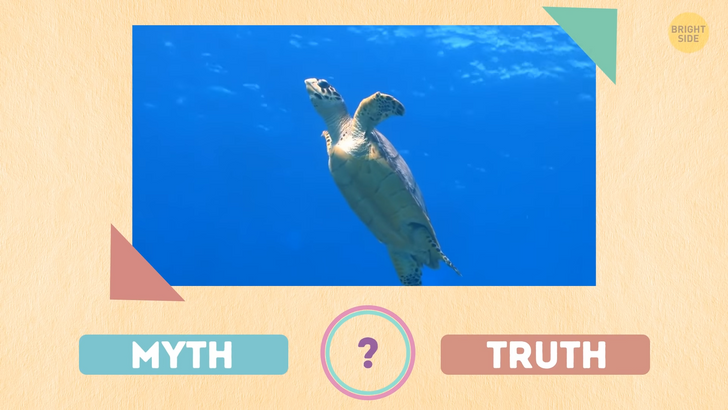
Moving on. Turtles live inside their shells, and they can go outdoors anytime. Is it true or false?
It’s a myth! Those fairy-tale and cartoon turtles pop out of their shells whenever they like. But in fact, saying that turtles live inside their shells is like saying that people live inside their own skin. A shell isn’t just a separate empty space that serves as a costume! Although turtles can tuck their limbs inside for protection, it’s actually an integral part of the turtle’s anatomy.
Take a look at the actual structure of its skeleton — the shell is fused to the bones of the skeleton, and the turtle can’t live without it. The same goes for tortoises. One major key difference between turtles and tortoises is that tortoises spend most of their time on land, while turtles are designed to hang out in the water. That’s why turtles have thinner and more water-dynamic shells, and tortoises’ shells are more rounded and domed.
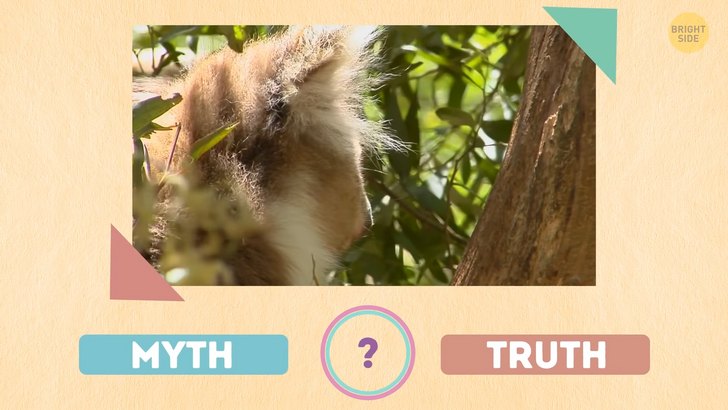
Next: koalas’ fingerprints are indistinguishable from humans. Does this sound realistic?
Although it definitely sounds like it’s made up, in fact, it’s true. If you compare a human fingerprint to a koala’s, you’d hardly be able to tell the difference even under a microscope. When scientists made this discovery, they warned the police because these fluffy little cuties are really capable of confusing forensics at crime scenes. The smart guys suppose that koalas’ fingertip features have recently improved independently in their evolutionary history. Koalas’ relatives like kangaroos and wombats don’t have the same features.
Koalas probably developed these complicated fingerprints because they help them grip onto leaves and branches more easily. Koalas are known as super fussy eaters. In fact, they prefer eucalyptus leaves of a particular age. Their sensitive fingers may have evolved as a tool to spot the right leaves by their texture. Koalas aren’t the only mammals with humanlike fingerprints, by the way. The finger patterns of chimps and gorillas are also pretty complex.
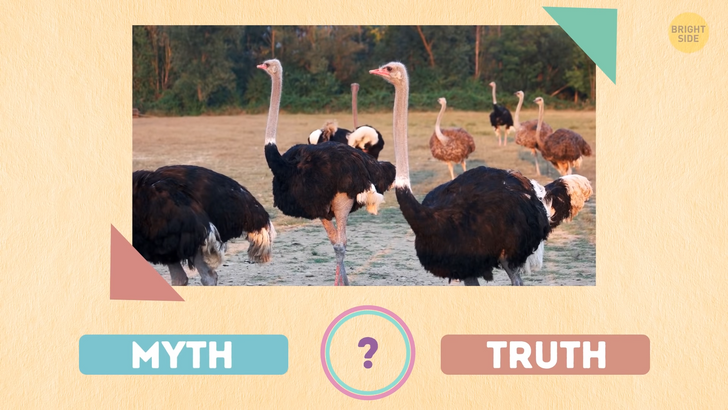
Ready to move on to the next rumor? Ostriches put their heads in the sand to hide from predators. Myth or truth, what do you say?
Nah, that’s just a myth. Ostriches don’t stick their heads in the sand when threatened. In fact, these guys don’t bury their heads whatsoever. This myth has spread thanks to that famous idiom — “to hide one’s head in the sand.”
In real life, ostriches have to dig holes in the sand for their eggs because they’re flightless birds. To make sure they’re evenly heated, ostriches put their heads in there to rotate the eggs from time to time. But ostriches still have some escaping mentality. When they face some threat, they can flop to the sand and stay perfectly still, pretending they aren’t alive.
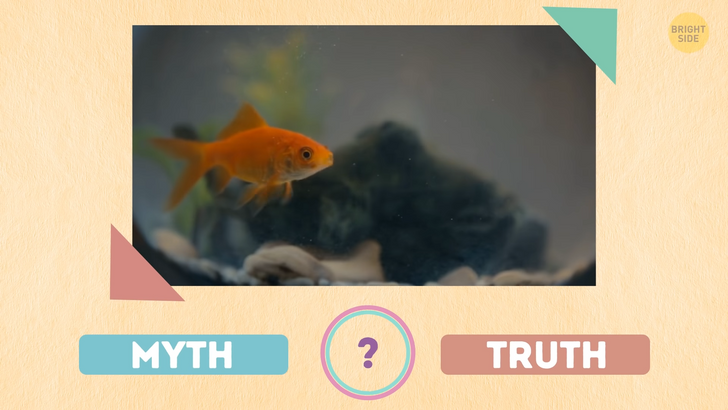
Goldfish can’t remember anything for longer than a second. Hmm, can it really be that bad?
If you often say you have a goldfish memory as an excuse for forgetting something important — I have some bad news for you. Multiple studies have proven that goldfish can remember things for several months, if not more. Scientists from an Israeli University held the cutest experiment: for 1 month, they turned on classical music while feeding the fish. They believed that this practice would teach the fish to associate the melody with food.
In 5 months, after the end of that training period, the fish still got excited and started looking for food every time they heard the music piece that had played earlier. (Goldfish: “Ah, Mozart! Hey where’s my food?”) It’s not clear exactly where this myth came from or why it’s so popular. But some people suggest that goldfish owners started it as they felt guilty about keeping their pets in tiny bowls.
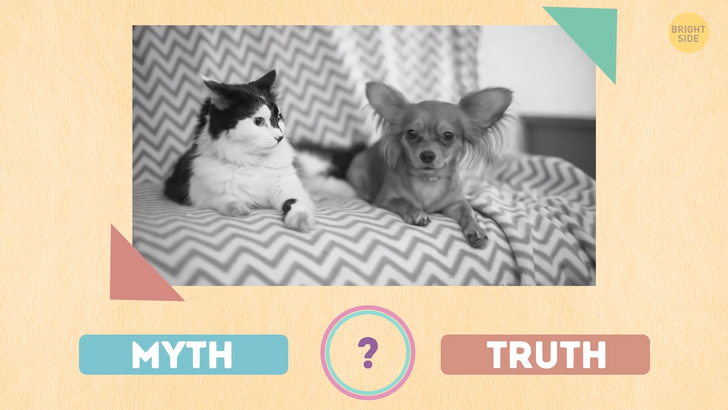
Cats and dogs are colorblind. Any thoughts on this one?
That’s not true. Cats and dogs have much better color vision than we thought. This myth is probably just an exaggeration of the fact that each animal perceives colors differently than people. Studies revealed that both dogs and cats can see in green and blue.
They also have more light-sensing cells in their eyes — also known as rods —than humans do. It means that cats and dogs can see way better in low-light spaces. Dogs’ eyes have fewer cones — those color-sensing cells. That’s why scientists believe that dogs’ approximate color vision is only about 1/7th as vibrant as humans’.

Sharks can only breathe and stay alive when they swim. Does this one sound real to you?
According to a popular misbelief, sharks can breathe only while moving because swimming helps them push water over their gills. Although many kinds of sharks are designed this way, many others — like bottom-dwelling nurse sharks — don’t need swimming to pump oxygen-rich water over their gills.
Meanwhile, all sharks lack swim bladders. So, if they stop swimming, they’ll probably sink to the bottom. But luckily, a shark’s body can’t be compressed. That’s why rapid descents or ascents are safe for them.

Sea otters “hold hands” so they don’t drift apart while sleeping. Can you believe that?
Yep, it’s true. You can keep awwing at it, but in fact, this way of sleeping has a practical purpose for them. Scientists suggest that sea otters developed this cute habit to stay close to their mating partners.
If you hold your otter girlfriend’s hand tightly all night, it will reduce the risk of her mating with another male while you’re sleeping. Shameless. Also, holding hands help otters to protect themselves from predators because they stay away from the land altogether.
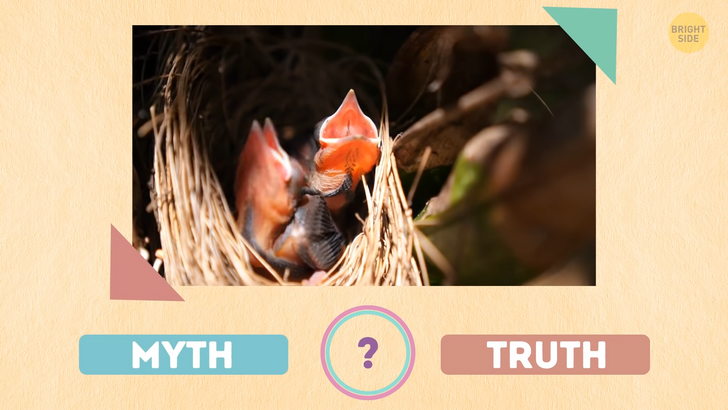
If a human touches a bird nestling, its mother will abandon it. Myth or truth, what do you think?
Luckily, it’s just a myth. In fact, parent birds don’t recognize their younglings by smell. So feel free to put the cuties back in the nest. And always hang on to your otter girlfriend, so you won’t get eaten. Good advice.











